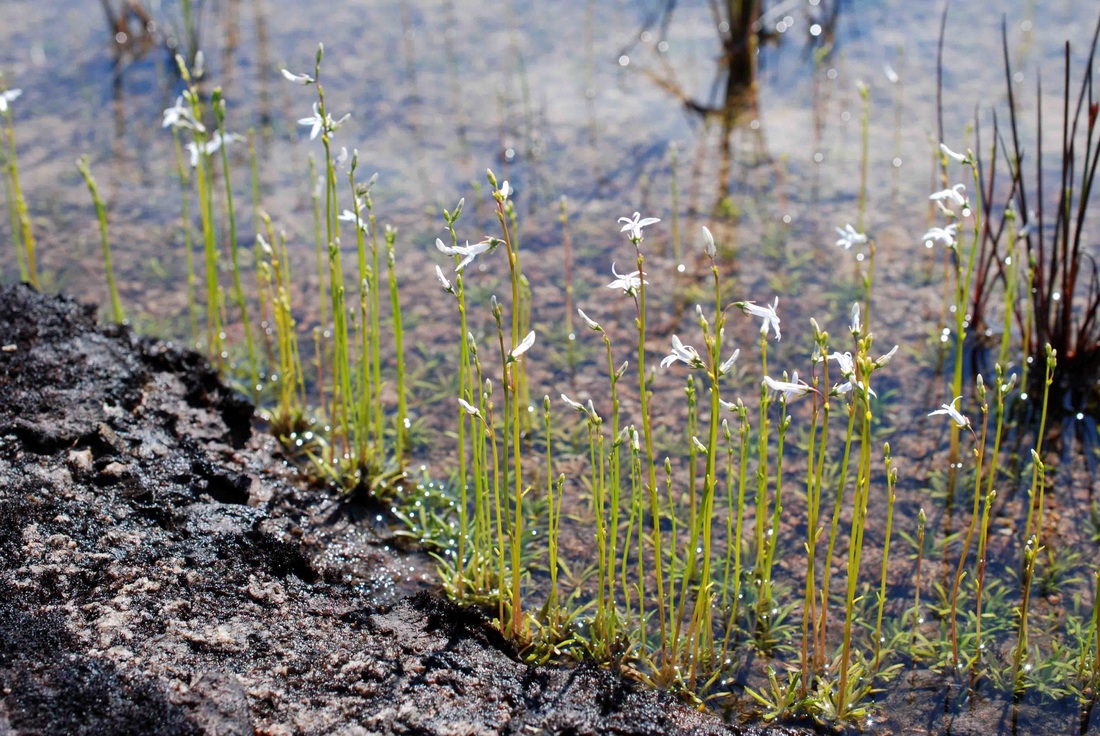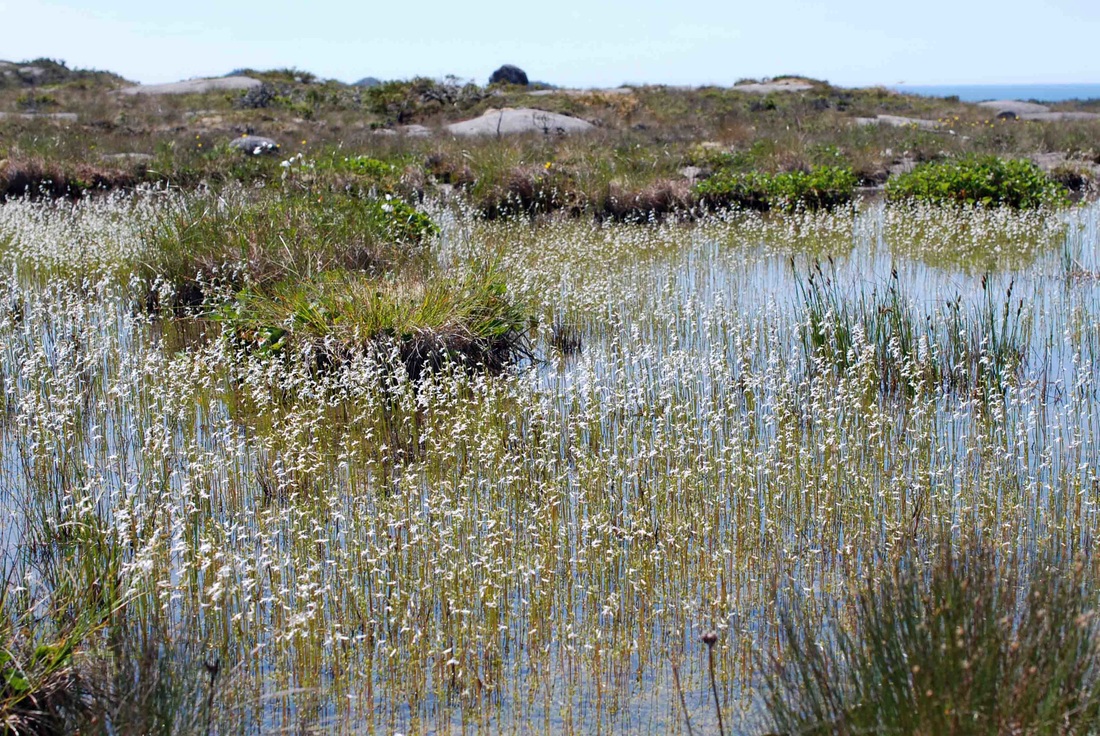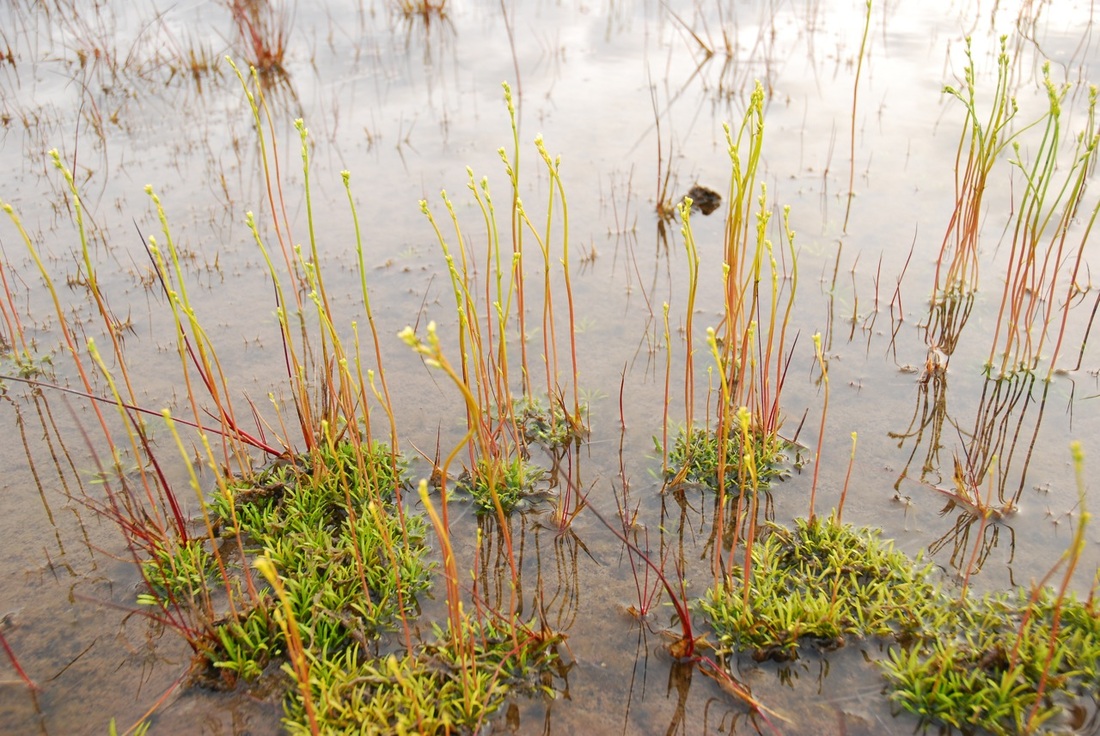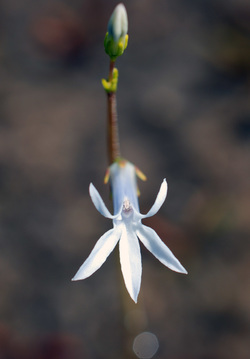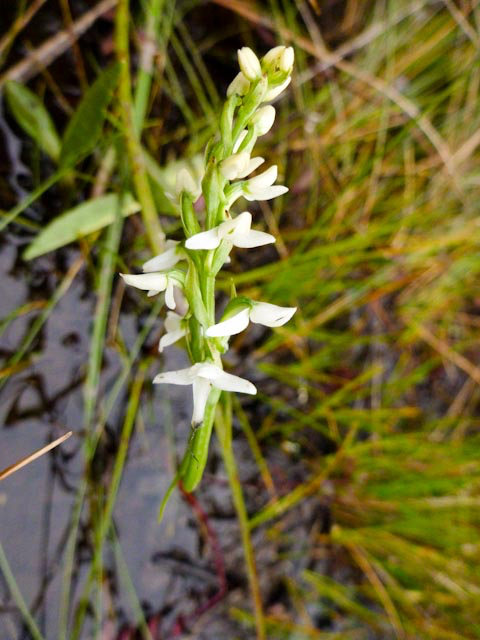Water lobelia, Dortmann's cardinalflower, water gladiole •
Lobelia dortmanna
{Lobelia = named after Matthias de L'Obel, a Belgian botanist}
Identification
This perennial aquatic plant seems to be mostly stem: it grows 20-100 cm tall with a rosette of small basal leaves (2-8 mm long). The thin linear leaves are hollow, a bit fleshy, and curve away from the stem. The unbranched stems bear a few well-spaced, white to pale-blue flowers. These flowers get to 2 cm long and are composed of five petals that are partially fused together to form a tube.
Habitat & Range
Water lobelia usually grows in shallow fresh water, though it may be found growing in water as deep as 2 m. It grows in sandy- or gravel-bottomed lake and pond margins at low elevations. It isn't widespread, but may be locally abundant. The common recorded coastal range extends from Vancouver Island and the adjacent BC mainland south to northern Oregon; however USDA Plants extends its range northward to Alaska, while Pojar and MacKinnon includes Haida Gwaii. It is also found in Northern Europe.
This perennial aquatic plant seems to be mostly stem: it grows 20-100 cm tall with a rosette of small basal leaves (2-8 mm long). The thin linear leaves are hollow, a bit fleshy, and curve away from the stem. The unbranched stems bear a few well-spaced, white to pale-blue flowers. These flowers get to 2 cm long and are composed of five petals that are partially fused together to form a tube.
Habitat & Range
Water lobelia usually grows in shallow fresh water, though it may be found growing in water as deep as 2 m. It grows in sandy- or gravel-bottomed lake and pond margins at low elevations. It isn't widespread, but may be locally abundant. The common recorded coastal range extends from Vancouver Island and the adjacent BC mainland south to northern Oregon; however USDA Plants extends its range northward to Alaska, while Pojar and MacKinnon includes Haida Gwaii. It is also found in Northern Europe.
References
Lobelia dortmanna L. In Klinkenberg, Brian. (Ed.). E-Flora BC: Electronic Atlas of the Plants of British Columbia. Lab for Advanced Spatial Analysis, Department of Geography, University of British Columbia, Vancouver. Accessed 12/12/2014.
Lobelia dortmanna L. Dortmann's cardinalflower. Plants Database. United States Department of Agriculture Natural Resources Conservation Service. Accessed 12/12/2014.
Knoke, D. and Giblin, D. Lobelia dortmanna Dortmann's lobelia, water lobelia. Burke Museum of Natural History and Culture. University of Washington. Accessed 12/12/2014.
Pojar, J. and MacKinnon, A. (1994). Plants of Coastal British Columbia. Vancouver, BC: Lone Pine Publishing. P. 341.
Authors and editors of page
Kelly Fretwell and Brian Starzomski (2014).
Lobelia dortmanna L. In Klinkenberg, Brian. (Ed.). E-Flora BC: Electronic Atlas of the Plants of British Columbia. Lab for Advanced Spatial Analysis, Department of Geography, University of British Columbia, Vancouver. Accessed 12/12/2014.
Lobelia dortmanna L. Dortmann's cardinalflower. Plants Database. United States Department of Agriculture Natural Resources Conservation Service. Accessed 12/12/2014.
Knoke, D. and Giblin, D. Lobelia dortmanna Dortmann's lobelia, water lobelia. Burke Museum of Natural History and Culture. University of Washington. Accessed 12/12/2014.
Pojar, J. and MacKinnon, A. (1994). Plants of Coastal British Columbia. Vancouver, BC: Lone Pine Publishing. P. 341.
Authors and editors of page
Kelly Fretwell and Brian Starzomski (2014).
